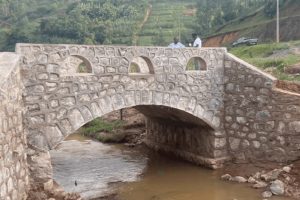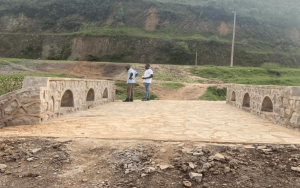Introduction
In the quest for sustainable infrastructure that supports rural development, stone arch bridges have proven to be a game-changing solution. Offering both durability and cost-effectiveness, these bridges play a crucial role in transforming remote communities by connecting them to essential services, boosting economic growth, and promoting environmental sustainability.
1. Cost-Effective Infrastructure
One of the most significant benefits of stone arch bridges is their affordability. Unlike conventional bridges that require steel or other expensive materials, stone arch bridges are built using local materials like stone, reducing overall construction costs by up to 70%. For communities in rural areas, this means more accessible infrastructure without the burden of high investment costs.
2. Durability and Longevity
Stone arch bridges are renowned for their strength and ability to withstand heavy loads and natural elements. Their pressure-resistant design makes them ideal for rural environments prone to floods or harsh weather. Once constructed, these bridges require minimal maintenance, and over time, they actually become stronger, making them a long-term solution for remote areas with limited resources.
3. Promoting Economic Growth
By connecting isolated communities to markets, schools, and healthcare centers, stone arch bridges help drive economic growth in rural areas. Farmers can more easily transport their goods to markets, while students and healthcare workers benefit from improved access to education and medical facilities. The reduction in transportation costs also fosters trade, increasing opportunities for small businesses and entrepreneurs.
4. Environmental Sustainability
In addition to economic benefits, stone arch bridges contribute to environmental sustainability. Using local materials minimizes the carbon footprint associated with transporting building materials over long distances. Furthermore, stone arch bridges blend seamlessly with natural landscapes, maintaining ecological harmony and avoiding environmental disruption.
5. Social Impact and Community Empowerment
Stone arch bridges don’t just connect places—they connect people. These bridges provide safe passage across rivers, valleys, and challenging terrains, fostering stronger ties between communities. Moreover, by using local labor and materials, stone arch bridge projects create jobs and empower communities to take part in building their own future.
6. Aesthetic Appeal
Beyond their functional value, stone arch bridges are known for their beauty and historical charm. These structures add aesthetic appeal to the rural landscape, serving as cultural symbols of resilience and tradition. Their design, which has been used for centuries, also enhances the cultural heritage of the regions where they are built.
Conclusion
Stone arch bridges offer a practical and sustainable solution to the infrastructure challenges faced by rural communities. With their cost-effectiveness, durability, and ability to drive economic and social growth, these bridges are instrumental in transforming rural areas, improving lives, and fostering a more connected future.
At Partners in Engineering for Impact Sustainability (PEIS), we are dedicated to bringing these benefits to Rwanda and beyond. By building stone arch bridges, we are not only improving access to essential services but also promoting sustainable development that will last for generations.
Contact us today to learn more about how stone arch bridges can help develop your community.



